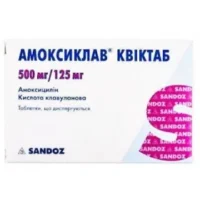Description
Augmentin ES (Amoxicillin Sodium) Powder for Suspension 100 ml. 600 mg/42.9 mg/5 ml
Ingredients
Each 5 ml of reconstituted suspension contains 600 mg amoxicillin (as amoxicillin trihydrate) and 42.9 mg of clavulanic acid (as potassium clavulanate).
Dosage
The dosage is based on the patient’s age, weight, and severity of the infection. It is important to follow the prescribed dose and duration exactly as directed by the healthcare provider.
Indications
Augmentin ES is indicated for the treatment of various bacterial infections, including respiratory tract infections, urinary tract infections, skin and soft tissue infections, and otitis media.
Contraindications
Do not use Augmentin ES if you are allergic to amoxicillin, clavulanic acid, or any other penicillin antibiotics. Consult with a healthcare provider if you have a history of liver problems or jaundice.
Directions
Shake the suspension well before each use. Measure the dose with a special dose-measuring spoon or cup. Do not use a regular table spoon. Take the medication with food to reduce stomach upset.
Scientific Evidence
Augmentin ES is a combination antibiotic that works by inhibiting the growth of bacteria. Amoxicillin targets the bacterial cell wall synthesis, while clavulanic acid helps in overcoming bacterial resistance.
Studies have shown that the combination of amoxicillin and clavulanic acid in Augmentin ES provides a broader spectrum of activity against resistant bacteria, making it an effective choice for various infections.
Additional Information
- Augmentin ES should be stored at room temperature away from moisture and heat.
- It is important to complete the full course of treatment to ensure the infection is completely cleared.





